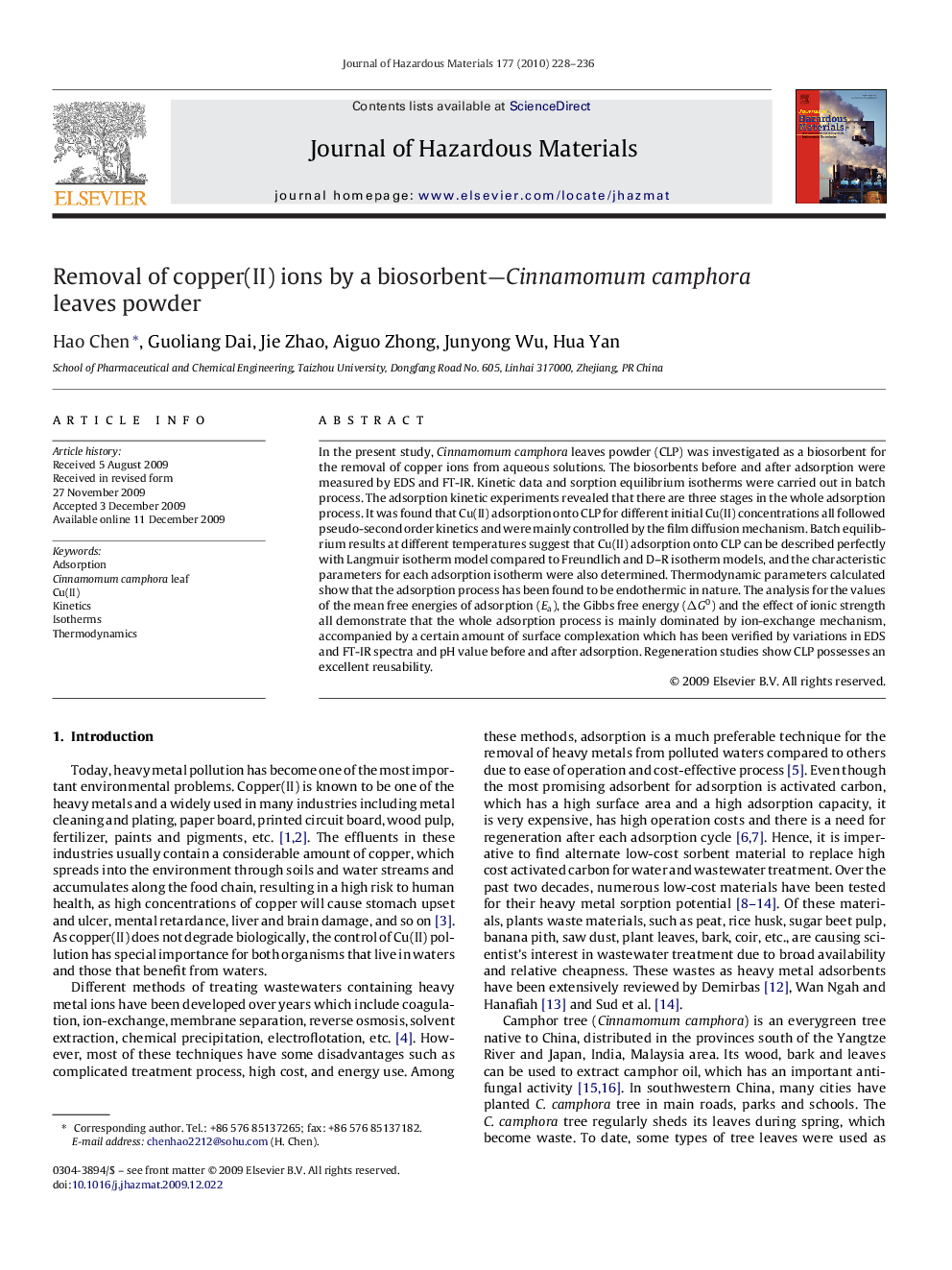| Article ID | Journal | Published Year | Pages | File Type |
|---|---|---|---|---|
| 580854 | Journal of Hazardous Materials | 2010 | 9 Pages |
Abstract
In the present study, Cinnamomum camphora leaves powder (CLP) was investigated as a biosorbent for the removal of copper ions from aqueous solutions. The biosorbents before and after adsorption were measured by EDS and FT-IR. Kinetic data and sorption equilibrium isotherms were carried out in batch process. The adsorption kinetic experiments revealed that there are three stages in the whole adsorption process. It was found that Cu(II) adsorption onto CLP for different initial Cu(II) concentrations all followed pseudo-second order kinetics and were mainly controlled by the film diffusion mechanism. Batch equilibrium results at different temperatures suggest that Cu(II) adsorption onto CLP can be described perfectly with Langmuir isotherm model compared to Freundlich and D-R isotherm models, and the characteristic parameters for each adsorption isotherm were also determined. Thermodynamic parameters calculated show that the adsorption process has been found to be endothermic in nature. The analysis for the values of the mean free energies of adsorption (Ea), the Gibbs free energy (ÎG0) and the effect of ionic strength all demonstrate that the whole adsorption process is mainly dominated by ion-exchange mechanism, accompanied by a certain amount of surface complexation which has been verified by variations in EDS and FT-IR spectra and pH value before and after adsorption. Regeneration studies show CLP possesses an excellent reusability.
Related Topics
Physical Sciences and Engineering
Chemical Engineering
Chemical Health and Safety
Authors
Hao Chen, Guoliang Dai, Jie Zhao, Aiguo Zhong, Junyong Wu, Hua Yan,
